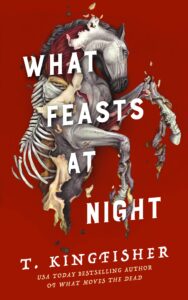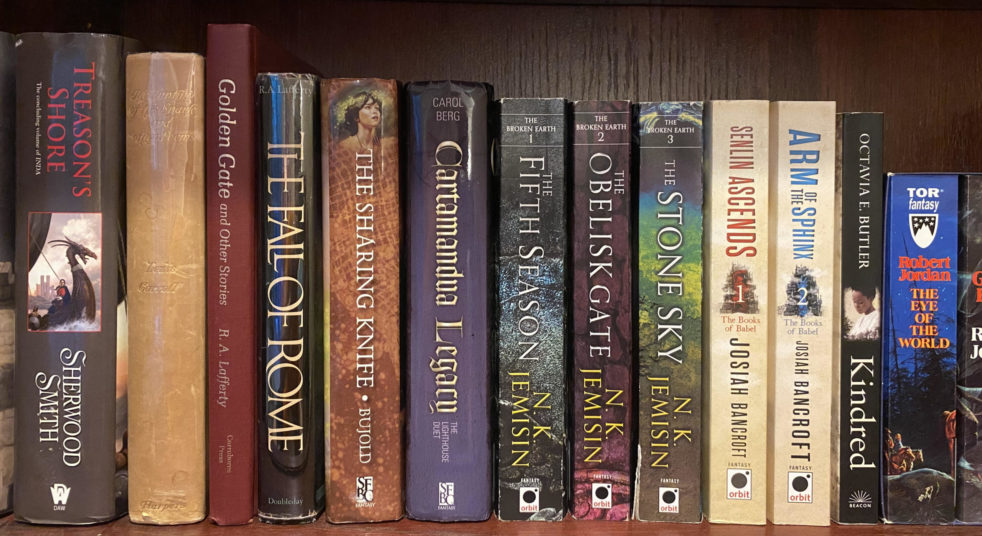
T. Kingfisher is having a moment in genre fandom. Two consecutive Hugo Award wins have given her honors in five separate categories, and she’s made the shortlist in two categories in 2025. I’ve already reviewed the Best Novel finalist A Sorceress Comes to Call, and today I’ll be looking at Best Novella finalist What Feasts at Night, sequel to the Hugo-nominated retelling of “The Fall of the House of Usher,” What Moves the Dead.
Unlike What Moves the Dead, What Feasts at Night is not a retelling. While much of the main cast returns—chiefly the sworn soldier Alex Easton, for which the series is named—it takes place in a new setting with a new antagonist. Here, Easton returns to kan ancestral home only to find the caretaker dead and the surrounding village terrified of a monster that can steal your breath while you sleep. At first, Easton seeks just to pull the lodge out of the disrepair that comes from months without a caretaker, but when people begin to sicken, kan task becomes one of identifying and stopping the monster before anyone else dies.
Readers familiar with horror story beats will read the synopsis and have a pretty good idea of how the story will go. And that’s not necessarily a bad thing—regular horror readers have enough affection for the genre conventions that they keep reading. Kingfisher is an accomplished and professional writer, so the story hits the notes it needs to hit and generally does what it says on the tin. It’s not the sort of book that will be held back by elementary mistakes.
That said, if a book is going to eschew surprises to follow familiar beats, it has to draw the reader’s attention with the way in which it hits those beats. Maybe it’s immersing the reader into the mind of a beloved character, maybe it’s creating the sort of palpable tension that keeps the reader on the edge of their seat. And this is where What Feasts at Night just doesn’t do enough. Easton’s PTSD keeps kan from being a purely generic horror lead, but ka isn’t the sort of vibrant central figure that will carry a whole story. And the atmosphere just never has the life that it needs to engage the reader’s terror. The crumbling hunting lodge far from modern civilization is a setting with plenty of horror potential, but it’s written in a perfunctory way that’s totally competent but lacks the necessary spark. The story even implies fairly early that the monster will take the form of a moth—a creature that also brings plenty of horror potential—but even the few moth sightings in the first two-thirds of the tale aren’t especially ominous. They’re there for foreshadowing, but they simply don’t bring the tension.
While the final quarter accelerates to a high-stakes, action-packed finale, it suffers from the mediocrity of the buildup. It also onboards a fair amount of folklore that read as information that the reader ought to take at face value, but it doesn’t quite nail all the details. There’s enough to provide for a satisfactory ending that’s broadly clear, but it left me with a couple stray questions at the finish.
Ultimately, What Feasts at Night is a horror novella that’s well-structured and hits all the necessary beats, but it doesn’t have the life to truly draw the reader in. It’s a competent story that will satisfy those looking for an easy read that checks the main boxes, but it’s not one that elevates beyond the genre standards.
Can I use it for Bingo? It’s a Book Club book with an LGBTQIA Protagonist.
Overall rating: 11 of Tar Vol’s 20. Three stars on Goodreads.
